WEEK 1: MEMORY
The slight crunch of soiled, leftover snow-slush under my boot on the road reminds me of my days as a child, walking to unknown places with my mother and grandmother during summer vacation. Tired and sweaty, I wondered: Where are we going? How much longer until we get there? My eyes focused solely upon the dusty, broken pavement, underneath which lay a shallow brown layer of dirt, not quite sand, but definitely not suitable for growing trees or even weeds. My sneakers were orange and holey; summer play shoes perfect for getting toes dirty.
I wanted to know – why had we come halfway across the world to visit Grandma and Grandpa when all we do is walk places? Isn’t Grandma tired? She’s a little old lady! and she told me to wait just a little longer, that we’d get there eventually if I was patient, with that Grandma-smile that scrunched her eyes up and crinkled her cheeks with the lines of age.
Our feet indented the road, leaving soon to fade footprints in the dirt. Likewise, our feet indent the dirty snow left in the lining of the curb, in the corners of the streets, always leaving echoes of passing thoughts – Where are we going? How much longer until we get there? – soon to be brushed over with the footprints of others, and then melted into the asphalt, evaporated into the air, drifted down into the sewers: forgotten, passed by.
WEEK 2: PORTRAIT
I stopped this girl on 15th Street on my way back to my dorm from an afternoon class on the day that there was snow in the morning which melted by midday. She turned out to be a Parsons student as well, and was quite receptive to being part of my homework. With a bright voice, she introduced herself as “Katie,” and she described herself as “an artist, I like illustration and animation, and I want to work at Disney because my dad worked there,” with a bright and cheerful voice.
I asked her how the semester was going. She said, “I’m really happy about it, actually! Like, all my classes are great, and I feel like I’m actually doing stuff, you know? It’s a lot of work, but it’s good work. I feel productive. Getting closer to my goal!”
I gestured to the puddles of quickly melting snow, asking if she was cold. Katie explained that she was just going to the nearby grocery store to pick up the ingredients for grilled cheese, which “I just became obsessed with. Grilled cheese is so good, especially with pickles,” she gushed as she laid a hand over her heart. “Yeah, so I’m not that cold. I’ll walk there fast and walk back fast, and it’s getting warm now. It’s not that bad!”
It took a few tries to get her portrait right. She wanted to see each shot after I took them, and told me to delete a couple because “I look so ugly in these ones, don’t use those. Use this one! This one is good. I like this one,” and so that photo is the one I used in the Photo Blog.
WEEK 3: STYLE
The frustrating thing about my body is that it isn’t the right shape. It doesn’t reflect my mental image of myself. The me in my head has rigid lines and angles, not curves, so when I try clothes on in stores or at home, I always get upset that this body does not allow the garments to fit “correctly,” the way that I imagine they will, and I must face the cursed reality that is the soft curviness of my body.
As a result, I rarely shop for myself. I know that the clothes that I want to wear, the clothes I like, will not fit properly on me. To spare myself the pain of seeing how much they don’t fit, I don’t try them on. I help my mother and my sister pick out clothing instead. They try the clothes on, they look good, they are happy. Then, I am happy, too.
It is far easier for me to “shop in my own closet,” or in simpler terms, find my parent’s old clothes and pick out pieces that I enjoy and flatter me. I wear many old things.
Sometimes, my mother goes to the local mall to take a walk after work and finds a t-shirt or a pair of pants that she thinks I will like. Years ago, she bought me form-fitting graphic t-shirts and coarse boot-cut jeans; now she buys me baggy, plain white t-shirts, soft sweatpants, and loose culottes. In her words, I “look like a little old lady.” But looking like a little old lady makes me feel okay about my appearance, so that is exactly what I will do.
WEEK 4: PERVERSE
- 4: Perverse
- 4: Perverse
- 4: Perverse
The first time this child laid eyes on me, she started crying. That was about six years ago, before she could speak and after she learned to pose for taking photos. Her name is Victoria.
I usually see her and her family on Sundays at church. When Victoria was still a baby, her father would stay downstairs with her so that she would not disturb the service. Sometimes she slept soundly enough that her father could join us upstairs to hear the message for the week; other times she woke up in the middle of the pastor’s speech in order to cry. Her father would then carry her away, shushing her, footsteps on the wood floor echoing her cries for who-knows-what.
In the first photo, Victoria is whining because she ate too much edible blue ink while decorating cookies. Instead of rinsing her mouth out with water like any other sensible almost-seven-year-old would do, the unmoving youth wails with a purposefully pitiful face at everyone and disrupts the youth group’s music performance practice.
Victoria is turning seven years old this Saturday. Since she has begun using words when talking rather than intelligible, high-pitched babbling, the girl typically sits with her doting older sister in the young people’s’ pew during service, drawing. However, she often gets bored of sitting in the same place for more than one hour, and crawls under legs and pews to play games, usually with me. We make ugly faces at each other and smack hands. She did not know my name until two months ago. I have known her since her conception.
I love this kid. But she is a brat.
WEEK 5: DISCOVERY
On my way to my chosen location for Seminar, I passed by this ripped bag of children’s books next to a dumpster at the end of East 9th Street, approaching Tompkins Square Park. The dumpster was about five feet away from an antique store which was displaying their old, tattered, overpriced furniture all over the sidewalk. I saw a wooden chair with peeling white paint priced at $125, and some wire hangers priced at $35 each. My eyes wandered back to the ground, so as to make sure I did not trip over anything, and a splash of color in a small corner drew my attention. These were the books.
I spotted a Sesame Street book and a Clifford the Big Red Dog book on the ground; standing upright, outside of the plastic bag was a What’s Wrong Here? book. My younger sister and I used to pass the time pointing out-of-the-ordinary activities in those books all the time. There were other classic picture books as well, like A Very Hungry Caterpillar. I wanted to take these books with me. My first thought was that I could sell them at the Strand bookstore; then I thought that I could try to emulate some of the illustration styles. My common sense came back to me, and I realized that I needed to go collect artifacts for class, the books were probably dirty, and I had no room in my backpack.
I stood in that spot for a long time, reflecting on rediscovered memories.
WEEK 6: STORY
- 6: Story
- 6: Story
- 6: Story
I met Joe when I stopped to rest my feet in a McDonald’s on Friday night. There were no empty tables and the chair across from him was unoccupied, so I sat and we started talking.
I met Joe when I stopped to rest my feet in a McDonald’s on Friday night. There were no empty tables and the chair across from him was unoccupied, so I sat and we started talking.
Joe grew up in Palisades Park, New Jersey as the oldest sibling (of how many siblings, I don’t know) of a Korean family. His parents are immigrants. He is allergic to apples and citrus unless they are cooked. He did well in school, though the level of competition in his school district was not high, had friends and a social life; all in all, a fairly normal K-12 experience.
When I mentioned that I attend Parsons, his face lit up – he had been quite talented in the fine arts, preferring acrylic paints, and initially wanted to go to art school. But as expected of Joe’s somewhat strict parents, he was pushed into a “less risky” path of education, and ended up going to NYU after lots of arguments regarding his being the first son of the family and his financial future. He wonders how he would have turned out if he had went to art school. He graduated three years ago.
We got on the topic of work. Joe assured me not to worry about finding a job, using himself as an example. “I majored in International Relations and now I work in the medical field. You’ll be okay. You’ll find a job.” I asked, after hearing his nostalgic descriptions of NYU, whether he liked school better than work. He said yes.
“With school, you can do whatever. Like, you’re paying to be there, so whatever classmates or professors say doesn’t really matter. There’s not much pressure. But when you’re working, there’s always some amount of stress? And since they’re paying you, you always feel a certain level of. . .pressure, because you should be upholding a set quality for your work.”
Joe currently leads the college ministry at the Remnant Presbyterian Church. His birthday is sometime next week. He did not seem particularly tired or stressed, only lightly complaining that he needed to go home and do laundry. Even so, I wish this gentle, soft-spoken man a wonderful 27th year of life.
WEEK 6: STORY (CONTINUED)
On Sunday, I was trying unconventional ice cream flavors at Sundaes and Cones while Connie stood in front of the display case, debating with herself. We discussed the strangeness of some of the flavors, like corn and wasabi, and commiserated over the too-strong fragrance of the lavender flavor. After a few minutes, she bought one scoop of black sesame ice cream on a waffle cone. It smelled strongly of sesame oil.
Historically, Connie disliked black sesame. She did not like black sesame seed desserts while growing up, nor did she like the whole seeds as a garnish. She could tolerate misugaru, which is a drink made from ground sesame and hot water, although she did not enjoy it. She drank it to appease her aunt.
Last week, she was suddenly struck with a craving for black sesame ice cream. She did not understand the craving, yet she went out to this store and bought a black sesame ice cream. In her words, “It was so good.”
Connie still does not love black sesame. She said, “Like, I still don’t really like it, but this [gestures to cone] is okay. This is good. I really like this. I got the same one the day before yesterday. This is the third time I came here – no, wait. This is the. . .sixth? Yeah, sixth time I got ice cream this week! I can’t stop. I have this addictive personality, so I’m gonna keep eating this for weeks until I get sick of it.”
I cautioned her to slow down her ice cream consumption for the sake of her health and her wallet. I do wonder, by the end of next week, or next-next week, will Connie be sick of the flavor, of ice cream itself, or of both? Only time will tell.
WEEK 7: UNFAIR
- 7: Unfair
- 7: Unfair
Some things are more noticeable in the sunlight. This poster is taped to the side of a traffic light’s pole at the intersection of 6th Avenue and 16th Street. The subject matter alarmed me, so I took a quick photo and later searched the internet for information regarding this boy.
I discovered this article (http://www.nydailynews.com/new-york/cops-kips-bay-boy-16-missing-days-article-1.2502965) stating that the boy, Kyle, was spotted and reunited with his family after five days, relatively unharmed. The article also says that he has a host of mental conditions.
This sparked the thought that society does not have many safeguards in the case of non-neurotypical persons. It feels like every week or so that a special-needs child goes missing in the city. Sometimes they are found alive; many times, they are found dead.
Non-neurotypical people can be wrongly victimized as well. Police officers may see characteristics common in autistic people as valid reasons to “feel threatened” and “be concerned for their safety,” like lack of eye contact, delayed responses, fidgeting, and fleeing from overstimulating environments. Any of these behaviors paired with non-white skin would probably give an officer an “acceptable reason” to shoot.
Furthermore, a large percentage of the homeless or at-risk population is composed of people with mental illnesses. They may not have any support systems. They have little hope for finding affordable medical necessities, such as medication, to keep their conditions manageable or under control. They experience violence and hardship. Overall, their quality of life is very low.
(I do wonder why that poster is still taped to the pole. How is it in such good condition? Why is it handwritten, while the posters included in the published article are typed?)
WEEK 8: INSPIRATION
Inspiration is hard to find. The word feels so burdensome, like I need to have a great muse or burning passion for something to be worth making. As a result, I rarely have decided ideas or sources of inspiration. It makes me stressed.
So usually when I finally go to work on a piece, my head is blank and empty of ideas. I do not know what to do. If it is a drawing or a painting, I will reach for whatever color I want that day, make lines on a surface, and see what comes from it. If it is a 3-D piece, I will reach for whatever cheap, malleable material I have and play around with it.
What comes from these sessions is often good work that is well received by peers and teachers. They may say, “This is cool! Where did you get this idea?” and I will almost definitely answer, “I have no idea what I’m doing.”
A few classmates have remarked that “the day you figure out what you’re doing, your career will be over,” which I think is an apt statement. Whenever I have a clear direction for what I want to do and I follow it, it turns out to be subpar work. I don’t enjoy this aspect of myself; maybe I will grow out of it.
The themes I end up going back to all the time stem from small, unnoticeable things, like the process of plants dying or light streaming through windows – mundane, everyday instances. For example, the water-like photo this week truthfully is a glass lawn decoration complete with rocks and shriveled leaves.
WEEK 9: SUSTAINABILITY
This week’s Sustainable Systems class had a natural dyeing workshop directed by Laura Sandstone in the 2 West 13th Street building. I had read some material on natural dyes and fabrics beforehand, but had never gone so in depth; Sandstone, aside from being a delightful presenter, demonstrated techniques and materials suitable for dyeing.
She showed us how to dye with easily obtainable plants, like onion skins, rosemary, carrot tops, and red cabbage, as well as how much mordant to add to the dyeing liquid in order to make the colors stick to the fabric.
Before the dyeing part, Sandstone explained in great detail the vast variety of natural plant and animal based fibers that fabric could be made from. In this photo alone, we can see angora, bamboo, silk, linen, cotton, many types of wool in various states of processing, hemp chord, palm leaves, alpaca, yak, cashmere, mohair, llama, burlap, ingeo, and fabric made from milk. Other fabrics obscured from view include sisal, made from the agave plant. We also had the opportunity to hold silkworm cocoons. When shaken, the little pod makes a rattling noise from the dead, shriveled silkworm inside. The cocoons were much harder than I expected them to be.
I wondered how something so hard could become something so soft. So many materials that do not seem like they would make for useful clothing material can become extraordinarily different things. Sisal is a byproduct of tequila production. Ingeo is made from corn – not the corn silk, but the grain. Milk fabric uses literal liquid milk that is deemed unsafe for drinking. It is amazing how people have utilized these seemingly inconspicuous things and use them to create.
WEEK 10: BIRD BY BIRD
Throughout my life, I have done everything slowly. I think slowly, speak slowly, move slowly, eat slowly. I am slow to anger; I am also slow to happiness. My friends comment on the level-quality of my voice and speech patterns. I take a long time to do things that can be accomplished in a short time. There are very few things that I do not do slowly. Unfortunately, most of those things fall under the category of having a process, as in creating.
I have found that my best work is done in short amounts of time. When I compare the time I spend on the works I am most proud of to those of my peers, my time used comes up so much shorter than theirs. I used to feel insecure about this, thinking that spending less time on a piece makes it worse, but I now understand that different people have different styles that need different skills and methods to complete. There is little point in contesting these sorts of points with others.
Even so, it is important to go slowly, to think step by step. Trying to do an entire idea at one time is overwhelming. Similarly, trying to experience everything at once is overwhelming. It is far more beneficial to take in one aspect at a time, whether one is examining music, art, or even the outside environment. For example, I was on a boat this weekend. The wind made me cold while the sun warmed my face and blinded my eyes. The boat rocked steadily back and forth, mirroring the movements of the water. The sides of the boat sliced through the river, creating white foam and powerful ripples of movement which tapered off as the echoes grew farther away, disappearing into the uniquely regular patterns of solid sea. I strive to be like those ripples – calm, steady, and constant.
WEEK 11: INTERDEPENDENCE
- 11: Interdependence
- 11: Interdependence
- 11: Interdependence
- 11: Interdependence
The difference between dependence and interdependence comes down to the interests of the parties involved. Dependence is one party relying on another, while interdependence is two or more parties relying on each other. If we think about it, not many things are truly dependent. Most are interdependent.
For example, most children rely on their parents or guardians for survival. This relationship seems dependent. The adult typically makes money, provides food and shelter, and hopefully love and care for the child. The child accepts these things and may not contribute to the physical, tangible working parts of the household. However, the parent depends on the child for love, for personal growth, and for affection. The parent may cite their child as their “meaning in life” or “motivation to live,” making the relationship interdependent, as both parties reciprocate feelings for their emotional needs.
Students and schools are interdependent as well. Without schools, students have a harder time learning necessary skills to work in the real world and have a harder time finding jobs if they do not acquire degrees. Without students, schools cannot run, pay their teachers or administration, or teach. So this relationship, even though the students and some of the staff seem to get the short end of the stick, is not dependent, but is interdependent.
Old things and new things are interdependent. Without the old, the new cannot come forth. Without the new, the old cannot be fully appreciated. Oldness often sustains newness, whether it be in the arts, in philosophy, or in nature, where death constantly springs forth new life. And still, the old and the new can coexist peacefully. It is a good thing, to have this sort of mutually beneficial cooperation.
WEEK 12: “I am always doing that which I can not do, in order that I may learn how to do it.” – Pablo Picasso
I am re-learning how to sew.
My mother always had a small zip-up bag full of needles, fabric scraps, and (mostly red) thread. As a child, I saw her use it a couple times to repair torn bed sheets, or the holes in the knees of my pants after playing a little too roughly. These days, the bag is full of dust. It sits at the top of the medicine cabinet. My mother does not use it anymore.
She never taught me to sew. She didn’t teach me to do any sort of “feminine” activity, actually. She let me play with both Barbies and toy cars, and never pushed me to do anything I truly did not want to do. I never had any reason to sew, so I never asked how to do it.
In the sixth grade, we had to take a mandatory class called Family Consumer Science where we cooked fun, easy foods like smoothies and cookies and hand-sewed a pillow made from an old t-shirt. This was my first time sewing. I pricked myself with the needle many times, as 12-year-olds do, and dropped stuffing all over the floor. I missed a lot of stitches and made ugly stitches. My knots at the end of each thread were big and unsightly. My lines were crooked. I earned a B. But when I turned the pillowcase inside out, filled it with stuffing, and sealed it shut, I felt immensely proud at the soft, functional thing I had made.
We had to take the same class again in the eighth grade, with slightly more challenging tasks: cook the filling for a taco, make a lunch sack or a shoulder bag from a pair of old pants. I opted for the shoulder bag. This was my first time handling a sewing machine. I had poor control over the machine. My lines were crooked. I picked the wrong color thread. I earned an 89%. But when all the pieces in the pattern came together, I was proud of myself for making something functional. My classmates called it cute. I used it to carry my notebooks and binders around that year.
It has been almost five years since I last sewed anything. As a 19-year-old, sewing looks fairly simple – attach thread to the needle, take the needle in and out of the fabric – but it is easy to forget to take the needle out, instead going in multiple times in a row, creating ugly stitches, and it is easy to veer off path, making crooked lines. But I am learning. I am only in my first year of design school.
I will have plenty of time to learn.






















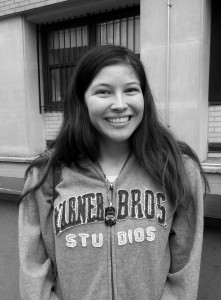
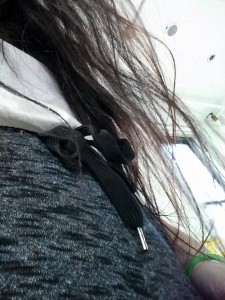
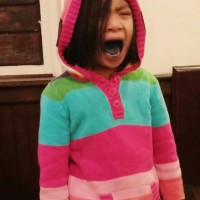

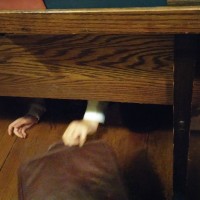
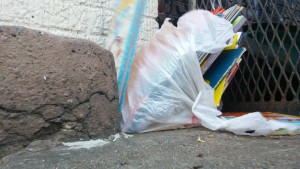
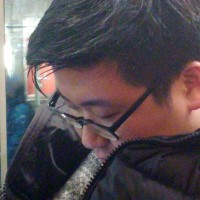


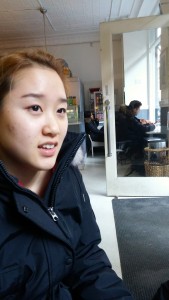
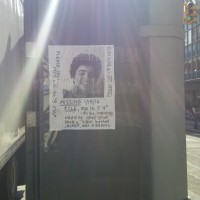
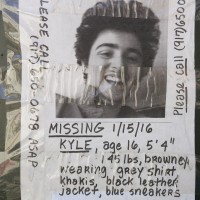
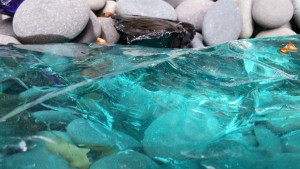
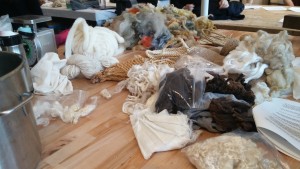


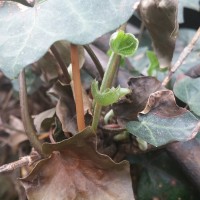


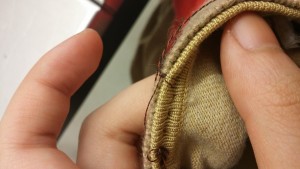
Your writing is very pleasant to read keep it up!
Your writing is very interesting, along with the accompanying images. Good work!
Use the blog also to experiment with composition – try out different angles, crops, zooming in/out, different points of view (from above, below, etc). Think of each photo as an art piece.
Rui, your posts are so thoughtful and reflective. I admired what you wrote in the “discover” post; you not only discovered a bag of books, but also re-discovered your memories. That’s an effective parallel that many people can relate to. Also, both posts for the “story” theme are insightful. You have an ability to capture details that create a multi-layered person and narrative. Very good work! Looking forward to reading more posts.
I really enjoy reading your thoughtful posts! With regard to the imagery – keep experimenting!
Rui, very nice work on the writing in this project. The words in each post seem thoughtfully chosen. There is also a kind of space you create around each post, one in which someone can sit and ponder the meaning of your writing. This is a gift. Truly. I hope you continue to share this with others.